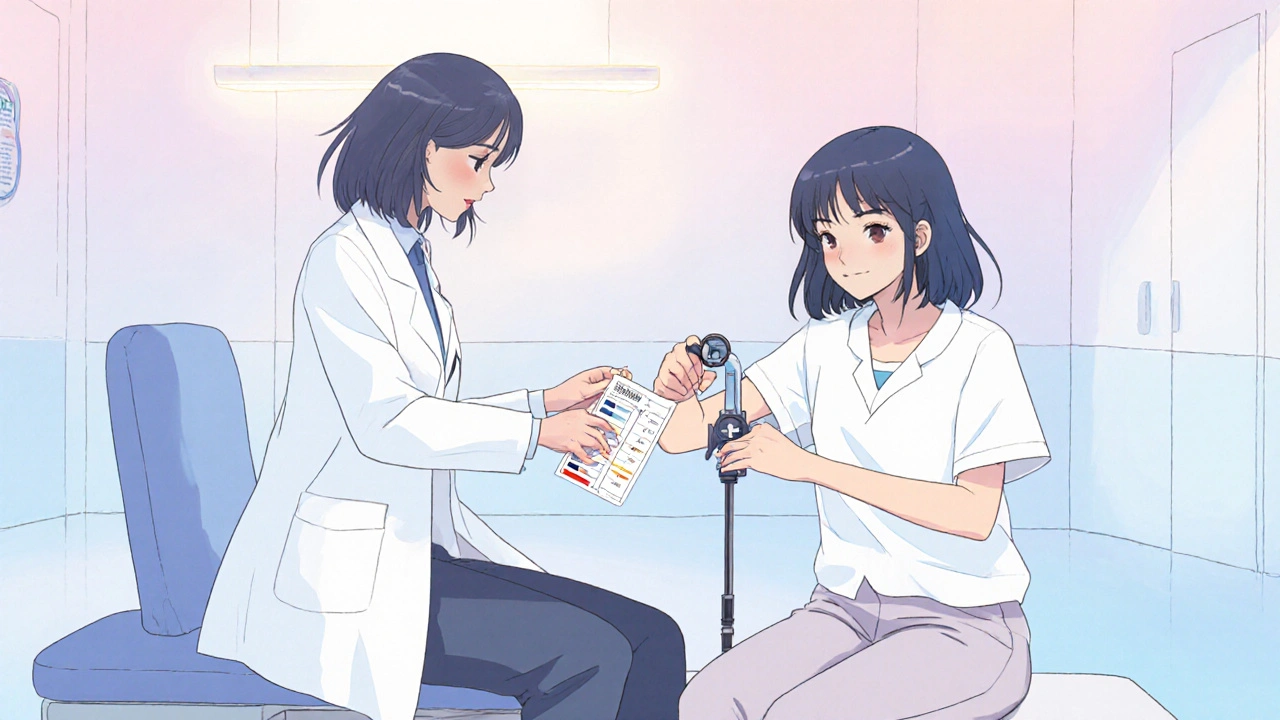Symbicort Turbuhaler 60MD combines formoterol and budesonide for asthma and COPD. Learn about effective alternatives like Flutiform, Foster, and separate inhalers-and how to choose the best one for your needs.
Read MoreMedication Alternatives and Management Strategies in 2025
When you're taking medication alternatives, options that replace or complement prescribed drugs to reduce side effects, lower costs, or improve outcomes. Also known as drug substitutions, these choices help people take fewer pills, avoid harmful reactions, or find treatments that fit their lifestyle. In 2025, more patients are asking not just what to take, but whether they need to take it at all. This shift is driven by growing awareness of deprescribing, the planned reduction or stopping of medications that may no longer be needed or could be doing more harm than good. Also known as medication reduction, it's not about quitting pills blindly—it's about working with your doctor to simplify your regimen safely. Think of it like cleaning out your medicine cabinet: if you’ve been taking five drugs for ten years and your condition improved, maybe three of them aren’t helping anymore. That’s where deprescribing frameworks come in—tools doctors use to review what you’re on, why you started, and what risks you might be carrying.
Many of the posts in this archive focus on drug interactions, when one medication affects how another works, often increasing side effects or reducing effectiveness. Also known as medication conflicts, these can be dangerous if ignored. For example, smoking while on eplerenone can spike your blood pressure, making the drug less effective. Or taking paroxetine long-term might lead to weight gain that’s hard to reverse. These aren’t random side effects—they’re predictable patterns tied to how your body processes certain chemicals. That’s why therapeutic drug monitoring, the process of measuring drug levels in your blood to ensure they’re in the safe, effective range. Also known as TDM, it’s critical for drugs like cyclosporine or imatinib, where even small changes can mean the difference between success and failure. And when side effects like anemia from dapsone or nerve damage from long-term use show up, knowing your side effects management, strategies to reduce, prevent, or reverse unwanted reactions from medications without stopping treatment. Also known as adverse effect control options—like switching to doxycycline or adding a weight management plan—can make all the difference.
What you’ll find here isn’t a list of random drug comparisons. It’s a focused collection of real, practical guides for people who want to understand their meds better. Whether you’re weighing Symbicort against Flutiform, deciding between Cialis Black and Forzest, or trying to quit smoking while on eplerenone, these posts give you the facts without the fluff. You’ll see what works, what doesn’t, and what to ask your doctor next. No hype. No ads. Just clear, tested options for managing your health on your terms.
Compare Alprostadil with Other ED Treatments: Effectiveness, Side Effects, and Best Options
Compare Alprostadil injections and MUSE with oral ED meds like Viagra and Cialis, plus vacuum pumps and implants. See success rates, side effects, costs, and which option works best for different needs.
Read MoreDapsone vs Alternatives: What Works Best for Skin Conditions and Infections
Dapsone treats skin conditions like dermatitis herpetiformis and leprosy, but side effects like anemia and nerve damage are common. Learn about safer, effective alternatives including colchicine, doxycycline, and rituximab.
Read MoreParoxetine and Weight Gain: How to Manage Metabolic Side Effects
Paroxetine can cause significant weight gain, especially with long-term use. Learn why it happens, how it compares to other antidepressants, and practical steps to manage or reverse it without sacrificing mental health.
Read MoreHow to Talk to Your Doctor About Irbesartan: A Patient’s Guide
Learn how to discuss Irbesartan with your doctor, from preparation and key questions to monitoring labs and handling side effects for safe, effective blood pressure control.
Read MoreDeprescribing Frameworks: How to Cut Medications and Side Effects
Learn how deprescribing frameworks cut medication load and side effects with practical steps, tools, and real‑world examples for clinicians.
Read MoreEffective Natural Alternatives to Ampicillin - Proven Options
Explore effective natural alternatives to ampicillin, including garlic, manuka honey, oregano oil, and more-see evidence, dosage, safety and when to see a doctor.
Read MoreRenal Failure & Dental Health: Oral Hygiene Tips for Kidney Disease Patients
Learn how kidney disease impacts oral health and get practical hygiene tips, diet advice, product picks, and dental‑care checklist for renal failure patients.
Read MorePhysical Therapy for Spastic Muscles: How It Works & What to Expect
Learn how physical therapy reduces spastic muscle tone, the key techniques used, and how to build an effective treatment plan for lasting mobility.
Read MoreCyclosporine Level Monitoring: Best Practices for Safe Immunosuppression
Learn practical steps, target ranges, and common pitfalls for effective cyclosporine level monitoring to keep transplants safe and patients healthy.
Read MoreForzest (Tadalafil) vs Other ED Medications: Full Comparison Guide
A comprehensive side‑by‑side comparison of Forzest (tadalafil) with Cialis, Viagra, Levitra, Stendra and generic options, covering dosage, onset, duration, price, safety and how to choose the right ED medication.
Read MoreModawake vs Alternative Nootropics: In‑Depth Comparison
A detailed, side‑by‑side look at Modawake (modafinil) and its popular alternatives, covering safety, effects, dosages and how to choose the right option.
Read More










